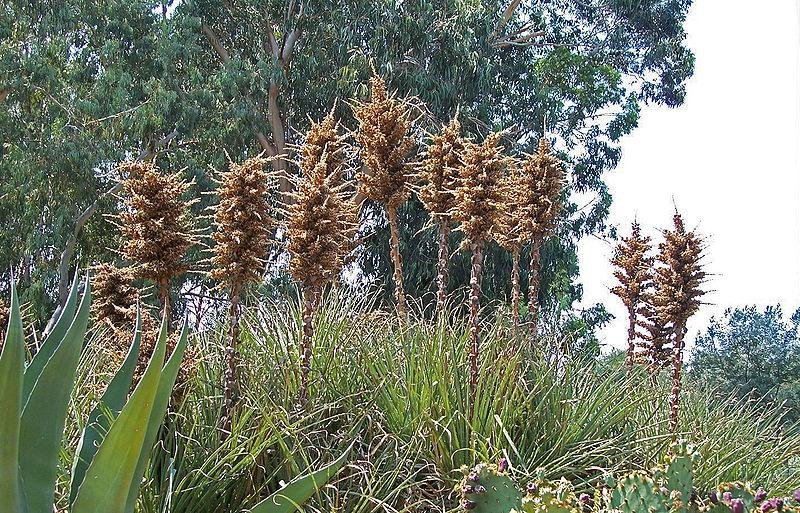The "sheep-eating" plant Puya chilensis has bloomed for the first time at the Royal Horticultural Society's Garden Wisley in the U.K.
In its native Chile, Puya chiensis uses its enormous neon spikes to trap sheep in the Andes mountains. After razor-sharp spines on the tips of its leaves ensnare the animal, it starves to death and decomposes at the base of the plant, becoming its favored fertilizer.















